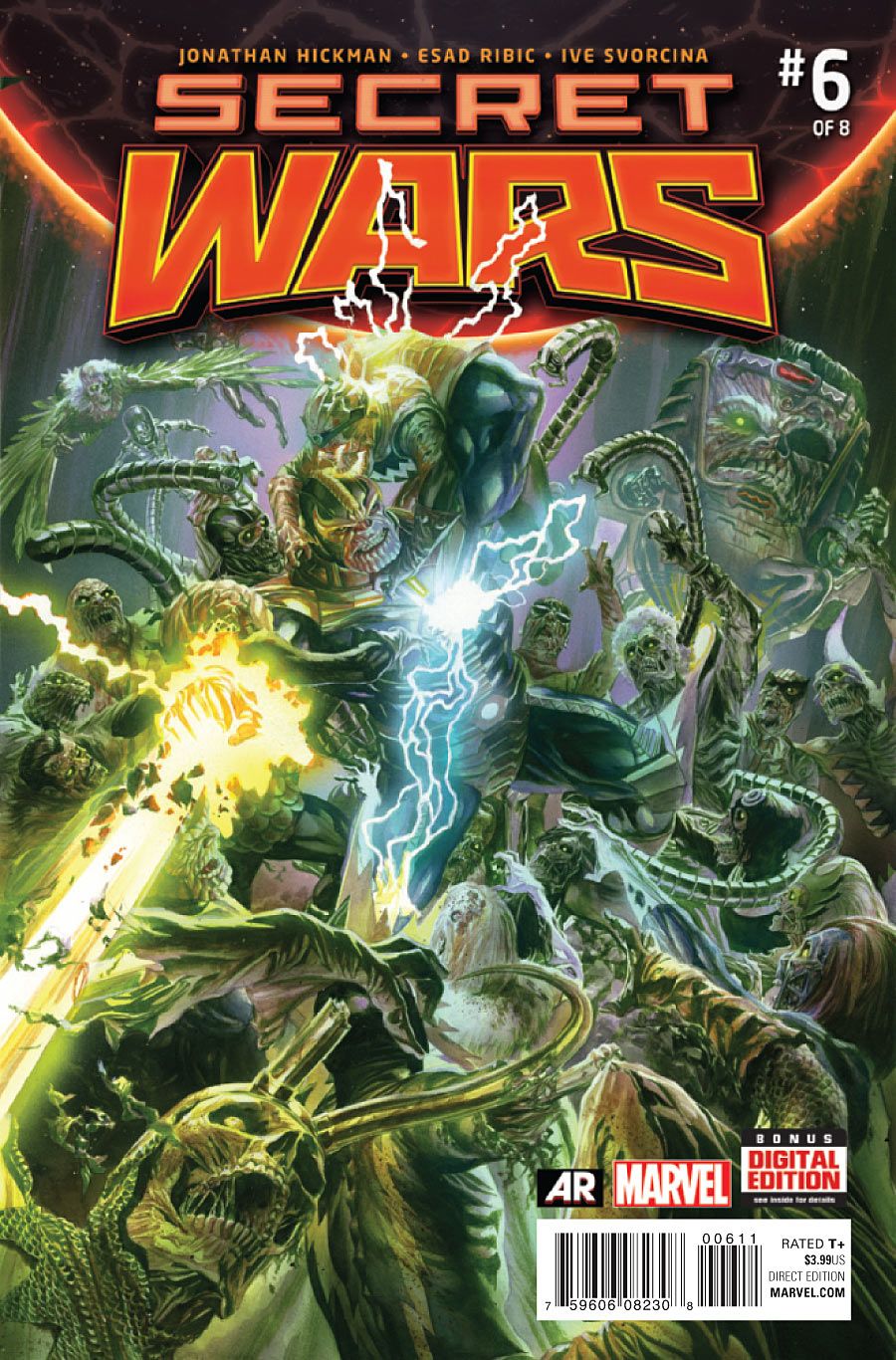In "Secret Wars" #6, Doom's demise gets put into motion by quite a few movers. Jonathan Hickman maintains impressive control over the many threads of his event as he shifts his attention from Doom to the various groups plotting against him. Esad Ribic gives the proceedings the appropriate sense of epic scale, and colorist Ice Svorcina casts it all in a dimming, end-is-nigh palette. While the tone can be a touch too serious, "Secret Wars" #6 manages what very few large event books can at this point in the game: it keeps firm control of the story it's started.
I continue to be impressed by the way Hickman somehow holds onto his script. As various factions conspire toward or consider Doom's overthrow, their schemes are made compelling in part by the fact they are so various. Rather than setting up a single McGuffin or electing only one way out, Hickman establishes a whole host of cracks in Doom's armor. The result is an issue heavy on plot, quick to read and full of potential surprises. Admittedly, when it comes time for the climax, all these many plot elements could collapse in a jumble, but -- here in the buildup -- it's an exciting avoidance of the second-act slump.
Hickman does lean on some of the tie-ins to do the explaining, which could take away from the drama for some readers, but it's at least easy enough to follow without that background. The three-week time jump is also a too-easy solution, but Hickman gets away with it by diving right in.
The lines are still slightly elevated and self-serious, with dialogue like "Who could ever truly understand the machinations that go on inside that head of yours?" and "You're following a certain tendril. Spiders scurrying along a very particular web." Scenes with Miles and Peter brighten it up a bit, but "Secret Wars" remains a book that believes in its own heaviness. For the most part, this approach works, but -- as a result -- I have to be careful which tie-ins I read before and after this main book. The tone differences can be quite stark.
Esad Ribic's work is tailor-made for serious events, so it's no surprise that he excels at "Secret Wars." From the imposing exterior of Agamotto to the wall-smashing final scene, Ribic conveys more weight and grandeur with pencil-thin linework than many other artists can manage with thick, heavy figures. He frames his panels for maximum sense of scale, and it pays off in an issue that hops as often as this one. With only one panel to establish a scene, the artist needs to work efficiently -- and Ribic more than delivers.
There are a few missteps with the characters' facial expressions -- eyes going too wide, smiles too frenzied -- but, overall, he captures the mood and intent of the scenes. Colorist Ive Svorcina also matches the twilight seriousness of Hickman's script with a dusky palette that carries through from Reed Richards' high-tech screens to Doom's medieval stronghold. This is a world on the brink of collapsing, and Svorcina's colors really make it look like it's passing into night. Even a red-brick wall looks like a sunset.
By some models of critical fairness, one should review "Secret Wars" #6 in a sort of vacuum, and thus far I've endeavored to take the issue at face value, as its own entity. However, I can't deny Marvel's publication schedule is taking away some of the series' urgency for me. With "All-New, All-Different Marvel" already kicked off, "Secret Wars" feels more like yesterday's news than the must-read, universe-morphing event it's meant to be.
Luckily, it's a well-drawn, impressively structured event that still manages to hold onto its many, many threads. Despite some self-seriousness and a tendency toward the dour, "Secret Wars" is still a complex, readable and compelling event. That's no small accomplishment.

